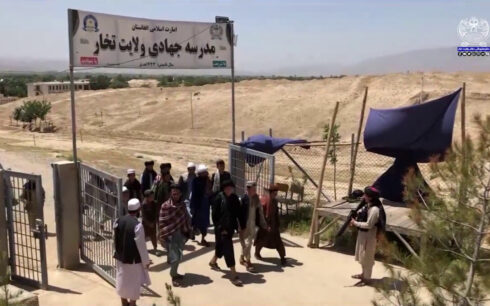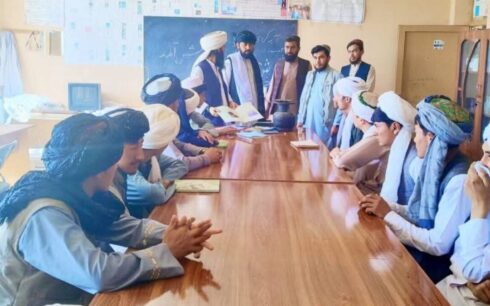The Taliban’s Ministry for the Promotion of Virtue and Prevention of Vice summoned media in Kabul still broadcasting some forms of music, demanding them to stop it.
The ministry said in a statement that the media officials were also asked to avoid publishing or broadcasting content deemed to be “contrary to Islamic principles and Afghan culture.”
Widening restrictions on media
This latest move adds to a growing list of unprecedented restrictions the Taliban have imposed on Afghanistan’s media and journalists over the past three years.
The United Nations recently reported that more than 330 journalists and media workers have been detained by the Taliban during this period, further highlighting the erosion of press freedoms in the country.
The 26-page report, published by the UN Assistance Mission in Afghanistan (UNAMA) and the UN Human Rights Office, covered the period from August 15, 2021, to September 30, 2024. It outlines human rights violations against 336 journalists, including 256 cases of arbitrary detention, 130 of torture or ill-treatment, and 75 instances of threats or intimidation.
“Afghanistan’s media sector has been deeply eroded, operating in an environment of censorship and fear,” the report states. The Taliban’s measures—ranging from arbitrary arrests to ill-defined “red lines” for reporting—have created a pervasive culture of self-censorship among journalists.
The Taliban have imposed sweeping restrictions, including an 11-point media directive prohibiting content deemed contrary to Islam or national values, the report says.
According to the report, Journalists are frequently required to obtain approval from the Ministry of Information and Culture before publishing sensitive reports, while media outlets accused of violating these guidelines face closure.
Key findings of the report include:
“A large number of media outlets” shut down after the Taliban takeover due to “loss of revenue”; “exodus of journalists”; and Taliban “restrictions.”
The Taliban “continue to create an extremely challenging” media environment.
Taliban “interfering with editorial content and internal operation of media outlets have substantially diminished media freedom.”
The UN has documented 336 cases of “arrest,” “torture,” and “intimidation” of journalists by the Taliban.
The Taliban’s conduct has created “a culture of self-censorship.”
Media are often required to “coordinate and seek approval” from the Taliban “prior to publishing a report; while news agendas are subjected to pre-vetting.”
Broadcasting music is banned; “men and women must work in segregated workspaces” and not appear in a program together.
Morality law added new restrictions, including “the prohibition to create or display images of living beings; the voice of women is now considered private; and drivers are not allowed to provide transportation to women without a mahram.”
In 2023, the number of male media workers increased by 10% and female media workers by 17%, as compared to 2022.
The restrictions have drawn widespread criticism from human rights groups and the international community, which view them as part of a broader effort to suppress free expression and dissent under Taliban rule.





